-
 bitcoin
bitcoin $107015.826941 USD
-2.18% -
 ethereum
ethereum $3637.352324 USD
-5.18% -
 tether
tether $0.999831 USD
-0.02% -
 xrp
xrp $2.338078 USD
-6.23% -
 bnb
bnb $998.272150 USD
-6.97% -
 solana
solana $167.598257 USD
-10.12% -
 usd-coin
usd-coin $0.999863 USD
0.01% -
 tron
tron $0.282573 USD
-5.09% -
 dogecoin
dogecoin $0.169891 USD
-7.39% -
 cardano
cardano $0.557554 USD
-7.03% -
 hyperliquid
hyperliquid $39.914802 USD
-5.85% -
 chainlink
chainlink $15.414549 USD
-9.97% -
 bitcoin-cash
bitcoin-cash $510.361911 USD
-4.26% -
 ethena-usde
ethena-usde $0.999194 USD
-0.03% -
 stellar
stellar $0.282092 USD
-6.07%
What to do if you lose your Coinbase Wallet recovery phrase?
If you lose your recovery phrase, act calmly, stop using the wallet, check backups, and contact Coinbase Support for guidance—though they can’t recover it.
Oct 26, 2025 at 08:54 pm
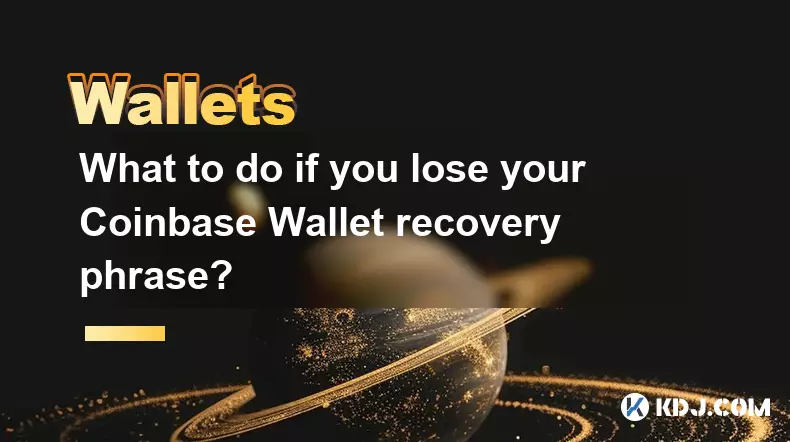
Immediate Steps to Take After Losing Your Recovery Phrase
1. Do not panic and avoid making hasty decisions that could worsen the situation. The recovery phrase is the only way to regain access to your wallet, so understanding your options is critical.
2. Immediately stop using the affected Coinbase Wallet if you still have access to the app. Any new transactions or changes may complicate recovery attempts later on.
3. Check all possible physical and digital locations where you might have stored the phrase. Many users write it down on paper, save it in encrypted files, or store it in password managers.
4. If you used a hardware wallet in conjunction with Coinbase Wallet, verify whether your recovery phrase applies to that device instead, as some users confuse integrated services.
5. Contact Coinbase Support through official channels, but be aware they cannot recover your phrase due to the non-custodial nature of the wallet. Their role is limited to providing guidance.
Why Coinbase Cannot Restore Your Recovery Phrase
1. Coinbase Wallet operates as a non-custodial solution, meaning private keys and recovery phrases are generated and stored solely on the user’s device.
2. No third party, including Coinbase, has access to your recovery phrase or private keys. This design ensures security and aligns with blockchain principles of decentralization.
3. When you create a wallet, the 12- or 24-word recovery phrase is derived from cryptographic algorithms unique to your device and is never transmitted to Coinbase servers.
4. Attempts to reset or regenerate the phrase through account login will fail because authentication into the app does not equate to wallet ownership—only the phrase grants control over assets.
5. Misunderstanding this principle leads many users to believe customer support can intervene, but doing so would compromise the entire security model of self-custody wallets.
Exploring Alternative Recovery Methods
1. If you previously linked your wallet to a cloud backup service like iCloud or Google Drive, check those accounts for any saved screenshots or text files containing the phrase.
2. Review email drafts or notes apps where you might have temporarily saved the phrase during setup. Some users inadvertently leave traces in unsecured locations.
3. If you own multiple wallets, confirm whether you reused the same recovery phrase across devices. Using the same phrase on another accessible wallet may allow temporary asset migration.
4. For advanced users, examining local device backups (e.g., iTunes, Android backups) might reveal cached data, though encryption often prevents extraction without the original device passcode.
5. Never use third-party tools claiming to 'recover' lost phrases—they are frequently malicious software designed to steal remaining funds or personal information.
Securing Future Wallet Access
1. Once access is regained—or a new wallet is created—write down the new recovery phrase immediately and store it offline using tamper-evident materials.
2. Consider investing in a metal seed phrase backup that resists fire, water, and physical degradation over time.
3. Avoid digital storage methods such as photos, documents, or cloud notes, as these are vulnerable to hacking, accidental deletion, or unauthorized access.
4. Split the recovery phrase using Shamir’s Secret Sharing or similar schemes to distribute trust among trusted parties without exposing the full set at once.
5. Regularly test your backup by restoring the wallet on a secondary device in a secure environment to ensure accuracy and functionality.
Frequently Asked Questions
Can I restore my Coinbase Wallet with my email and password?No. Email and password only grant access to certain features within the Coinbase ecosystem, not the self-custody wallet. The recovery phrase is required to restore wallet contents.
What happens if someone else finds my lost recovery phrase?They gain complete control over your wallet and can transfer all assets. Treat the phrase like a physical key to a vault—its exposure equals total loss of funds.
Is there a way to change my recovery phrase?Not directly. You must create a new wallet, generate a new phrase, and manually transfer your assets to the new address to effectively 'change' it.
Does Coinbase Wallet offer two-factor authentication for added security?Two-factor authentication applies to account access within the Coinbase ecosystem but does not protect the wallet itself. Protection relies entirely on safeguarding the recovery phrase.
Disclaimer:info@kdj.com
The information provided is not trading advice. kdj.com does not assume any responsibility for any investments made based on the information provided in this article. Cryptocurrencies are highly volatile and it is highly recommended that you invest with caution after thorough research!
If you believe that the content used on this website infringes your copyright, please contact us immediately (info@kdj.com) and we will delete it promptly.
- Red Poppy Coin, Australia: A Collector's Guide to the 2025 Release
- 2025-11-04 11:00:15
- Shiba Inu Gets the Nod: Good News for SHIB Holders!
- 2025-11-04 09:35:12
- PI Faces Scrutiny, LINK Gains, BlockDAG Miner Momentum: A Crypto Triad
- 2025-11-04 09:35:12
- Spare Change, Cash, and Bang for Your Buck: A New Yorker's Guide
- 2025-11-04 11:30:01
- Aster, CZ, and $25M: Decoding the DeFi Drama
- 2025-11-04 11:30:01
- Blazpay: The Next Big Crypto Coin Ready to Explode?
- 2025-11-04 09:00:01
Related knowledge

Reviewing Smart Contract Permissions: A Critical Security Step
Nov 01,2025 at 04:55pm
Understanding Decentralized Exchanges in the Crypto Ecosystem1. Decentralized exchanges (DEXs) have reshaped how traders interact with digital assets ...
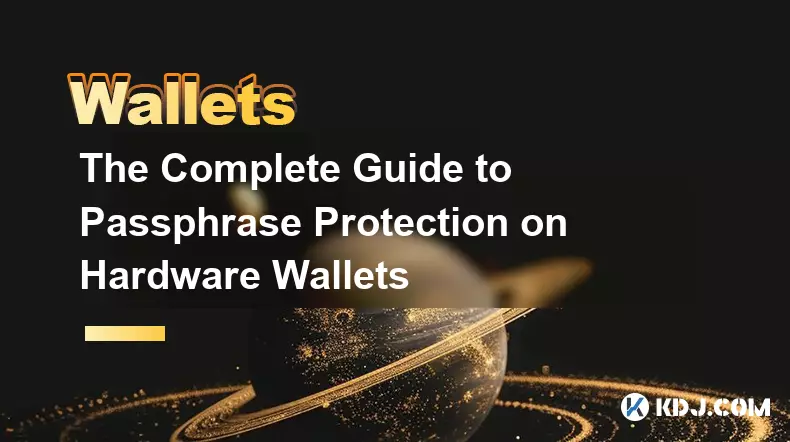
The Complete Guide to Passphrase Protection on Hardware Wallets
Nov 03,2025 at 10:37am
Understanding Passphrases in Hardware Wallets1. A passphrase, often referred to as a 25th word, adds an additional layer of security beyond the standa...
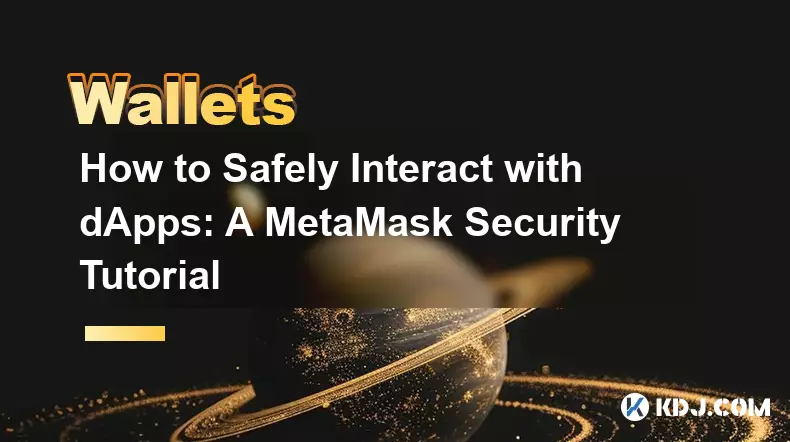
How to Safely Interact with dApps: A MetaMask Security Tutorial
Nov 04,2025 at 02:54am
Understanding dApp Interaction Risks1. Decentralized applications (dApps) operate on blockchain networks, enabling users to trade tokens, lend assets,...

Software Wallet Security Vulnerabilities You Need to Know
Nov 01,2025 at 11:37am
Common Exploits Targeting Software Wallets1. Phishing attacks remain one of the most widespread threats to software wallet users. Cybercriminals desig...
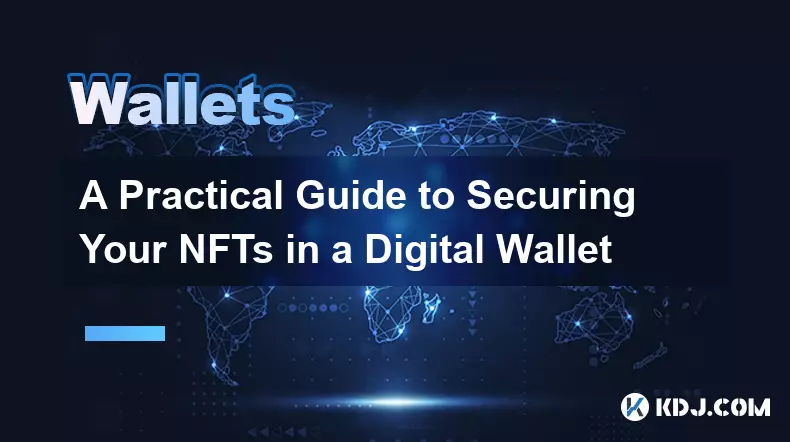
A Practical Guide to Securing Your NFTs in a Digital Wallet
Nov 03,2025 at 04:55am
Understanding NFT Wallet Security Fundamentals1. NFTs, or non-fungible tokens, exist on blockchain networks such as Ethereum, Solana, and Polygon, mak...
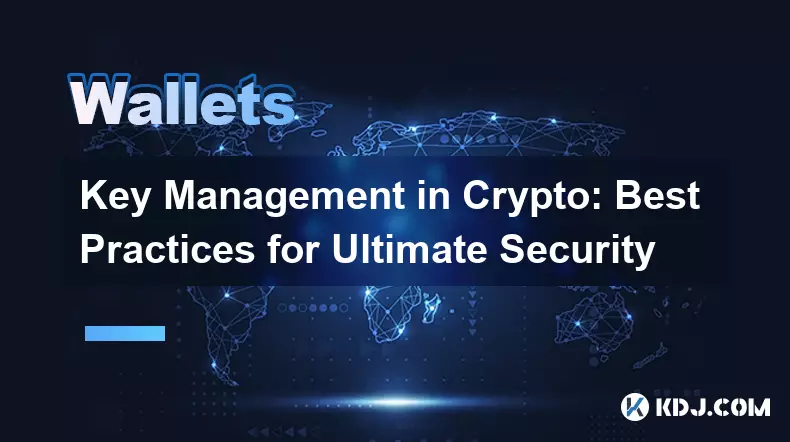
Key Management in Crypto: Best Practices for Ultimate Security
Nov 04,2025 at 05:18am
Understanding the Importance of Key Management in Cryptocurrency1. In the world of cryptocurrency, private keys serve as the ultimate proof of ownersh...

Reviewing Smart Contract Permissions: A Critical Security Step
Nov 01,2025 at 04:55pm
Understanding Decentralized Exchanges in the Crypto Ecosystem1. Decentralized exchanges (DEXs) have reshaped how traders interact with digital assets ...

The Complete Guide to Passphrase Protection on Hardware Wallets
Nov 03,2025 at 10:37am
Understanding Passphrases in Hardware Wallets1. A passphrase, often referred to as a 25th word, adds an additional layer of security beyond the standa...

How to Safely Interact with dApps: A MetaMask Security Tutorial
Nov 04,2025 at 02:54am
Understanding dApp Interaction Risks1. Decentralized applications (dApps) operate on blockchain networks, enabling users to trade tokens, lend assets,...

Software Wallet Security Vulnerabilities You Need to Know
Nov 01,2025 at 11:37am
Common Exploits Targeting Software Wallets1. Phishing attacks remain one of the most widespread threats to software wallet users. Cybercriminals desig...

A Practical Guide to Securing Your NFTs in a Digital Wallet
Nov 03,2025 at 04:55am
Understanding NFT Wallet Security Fundamentals1. NFTs, or non-fungible tokens, exist on blockchain networks such as Ethereum, Solana, and Polygon, mak...

Key Management in Crypto: Best Practices for Ultimate Security
Nov 04,2025 at 05:18am
Understanding the Importance of Key Management in Cryptocurrency1. In the world of cryptocurrency, private keys serve as the ultimate proof of ownersh...
See all articles










































































